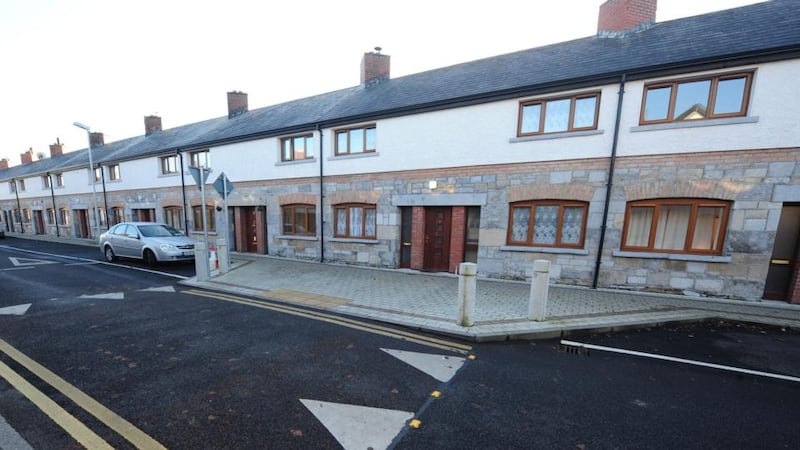Not so long ago, St Michael’s Road in Longford was in danger of becoming a no-go area.
Once charming, stone-built artisan homes sat dead-eyed with boarded up windows and doors. Drug dealing and anti-social behaviour was rife.
So much illegally-dumped rubbish was piled up in the back gardens of vacant houses that it was beginning to spill into neighbouring properties.

Even planning experts seemed to have given up hope. The road and its immediate surrounds were described in one document as “deeply problematic and irredeemable”.
“Most people just moved out. A handful of older people were left behind,” says Fiona Cormican, regeneration project manager with the Clúid housing association.
"It was seriously sub-standard accommodation. You had older people in homes with no central heating and outdoor toilets. Some were living downstairs, because they couldn't get up the steep and narrow stairs."
Regeneration programme
It's hard to imagine now. Today, following a regeneration programme that was six years in the making, the street is gleaming.
Artisan homes have been fully renovated, flower baskets hang from the doorways. New apartments and homes have sprung up from wasteland.
A new road connects the houses with the surrounding estates. At the crossroads is a new community centre which has become a busy hub for a pre-school, creche and meals-on-wheels services.
'Great pride'
"You can see there are families and children back on the street," says Cormican. "There is great pride on the road and around the town. This is a positive example of how everyone – residents, housing agencies, local authorities, tidy towns, businesses – can all work in partnership together."
It feels like a rare success story. Demand for social housing is at an all-time high. New figures to be published soon are expected to show waiting lists breaking the 100,000 mark for the first time. At the same time, social housing output has dropped more than 80 per cent since 2008.
The days of ambitious, Government-led social housing programmes are over, it seems. Funding has dried up as the Government struggles under the weight of massive debt.
Funding housing
But not-for-profit housing associations, such as Clúid, Respond! and others, say there are reasons to be hopeful.
A new model is emerging in which not-for-profit housing associations are getting finance - either from the Government or privately and leading regeneration and housing projects themselves. "I think this shows what can be done, even in challenging circumstances," says Simon Brooke, Clúid's head of policy.
Crucially, housing associations can access public funds – via the Housing Finance Agency – in such a way that they are not counted on the State's balance sheet.
For the Government, this makes it a much more attractive way of delivering social housing. “We see not-for-profit housing associations playing an important role in regeneration in the years ahead,” says Minister of State with responsibility for housing Jan O’Sullivan.
Brooke says it's not just about accounting. Housing associations also bring decades of experience and a partnership approach to table.
'Sustainable community'
"The bricks and mortar is the easy bit," he says. "The important thing is the people who live in them, creating a sustainable community long after we leave. That involves a lot of patience and skilled work by staff on the ground."
At Respond! the focus is on building inclusive communities where residents, especially those who are older or vulnerable, are placed at the heart rather than the margins of society.
Across the State, there are more than 20 large estates identified as being in need of urgent regeneration.
The collapse of public-private partnerships dashed the hopes of many communities trapped in these estates. But the success of housing associations offers a hopeful marker as a way forward.
Changing lives
For residents on St Michael's Road such as Frances Salinger having a home in a thriving community has been life-changing.
By her own admission, the 64-year-old had lived in a succession of often grim and sometimes dangerous flats. “But this is a like a fantasy world – turned real,” she says.
Her home is decorated just as she wants it in the various shades of blue of her home county, Dublin, along with dozens of pictures of her two great idols.
“Elvis and Joe Dolan – the greats,” she says, with a flourish, showing off her mounted record collection which covers the walls and window sills.
“People used to be afraid to walk around these streets. But the sense of happiness, comfort and confidence I have here . . . it’s becoming a thriving community. It might sound silly, but I used to scratch lottery tickets. I don’t any more. I don’t need for anything.”










